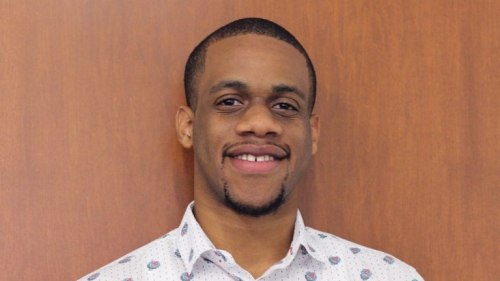
Jemar Bather
Jemar Bather is a doctoral student and a HIV/AIDS Training Grant Fellow at the Harvard T.H. Chan School of Public Health.
After earning a master’s degree from NYU Steinhardt’s Program in Applied Statistics for Social Science Research, he served as a research assistant in the Department of Biostatistics at the NYU College of Global Public Health, where he built statistical models to address health disparities in breast cancer, obesity, health literacy, and patient decision-making.
As a student at NYU, Jemar served on the planning committee of the American Statistical Association’s Diversity Mentoring Program and StatFest, and was awarded a President’s Service Award for his leadership. A native of St. Catherine, Jamaica, Jemar is a member of Mu Sigma Rho, the national statistics honor society, and founder of its NYU chapter.
You are a HIV/AIDS training grant fellow at Harvard. Can you tell us what you are learning?
Our department focuses on training us “from the ground up” to be sure we know the theoretical underpinnings before engaging in research. After completing my coursework, I hope to conduct research at the intersection of infectious disease and mental health.
As a research assistant at NYU, you built statistical models that addressed health disparities. What did you learn from your research?
In a forthcoming paper, we discuss a study where we examined the relationship between multiple health and genetic literacy measures and decision-making preferences in an urban, medically-underserved primary care patient population.
We found that health literacy is a significant predictor of patients’ decision-making preferences across different measurement tools. Our results demonstrate the importance of increasing patient health literacy and genetic literacy.
What do you feel that you can contribute to the field of biostatistics?
I have mentors who have consistently shown me the importance of the “lifting as you climb” tool that can make a field like biostatistics more diverse. To that end, I support initiatives that aim to increase the percentage of minorities in the field. I am also interested in studying the risk factors related to mental health disparities.
When did you become interested in statistics?
I became interested in statistics as an undergrad at Penn State. Dr. William Harkness was instrumental in sparking my interest. Under his tutelage, I learned about the abundance of opportunities you can pursue with a degree in statistics.
There is a well-known quote in the statistics community by John Tukey. He says, ”The best thing about being a statistician is that you get to play in everyone’s backyard.” This resonates with me because I have applied biostatistical methods in a variety of research areas.
Who did you work with at NYU and what did you take away from that experience?
I worked with Melody Goodman (NYU College of Global Public Health) and Jennifer Hill.They both were great mentors who guided me on how to apply the knowledge learned from the classroom to a public health issue.
